After the pink city of Jaipur and the blue city of Jodhpur, we had to complete our tour of Rajasthan with the white city, Udaipur.

Udaipur is centered around a pair of large lakes, and the expansive waterfront is the social center of the city, lined with hotels, restaurants, and leaping men.
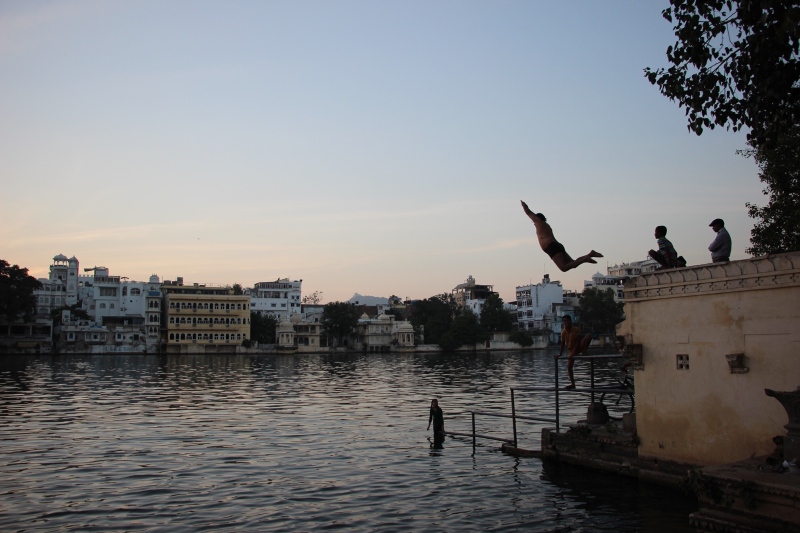
The white walls of the city provide a stark contrast with the colorful outfits of the inhabitants,

as well as a unique canvas for stunning sunsets.
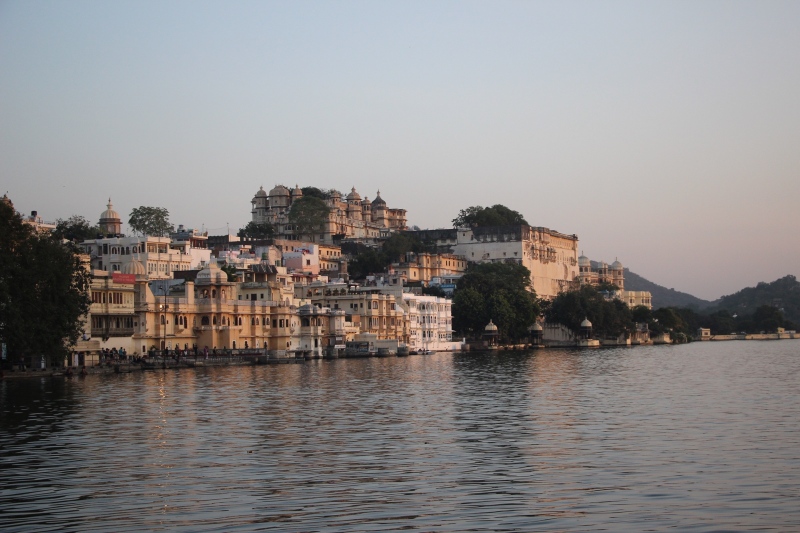
The waterfront provides an oasis from the chaos of modern India, but the calm vanishes when you walk a few blocks into the city.

From Udaipur we took a day trip to the Jain temple at Ranakpur,
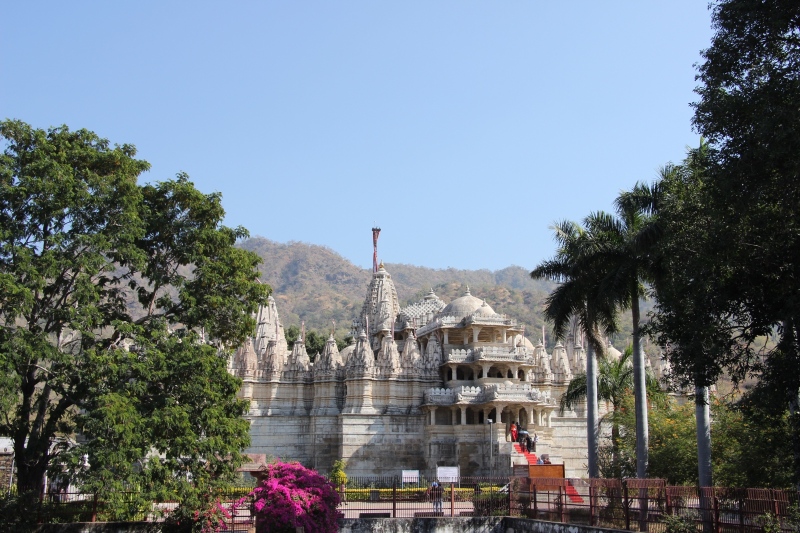
Filled with 1440 intricately carved pillars in white marble.

We honestly didn’t know much about Jainism coming in, and from the audio guides, we got the impression that they are kind of similar to Jedis. They believe that all sentient life forms share a life energy and they are big on meditation and peace, and we are pretty sure they used light sabers to carve their temple.

They also believe that greed and corruption lead you to the dark side, which made it particularly funny when this guy claiming to be the high priest insisted on blessing us and then demanded a generous tip.

From Udaipur we went to Agra, home of one of the most spectacular buildings in the world, the Taj Mahal.

To approach the Taj Mahal, you have to walk a half mile (cars are not allowed any closer, because pollution is slowly damaging the white marble, and apparently air pollution doesn’t travel), and then find the line to buy tickets, then the security line, then the receiving of the tickets line, then you have the line to collect your free bottle of water, and then you are finally ready to see… the entrance gate!

All the lines and waiting are worth it when you stand inside the gate and see the Taj Mahal framed in the archway.

Much like the city of Udaipur, the white marble of the Taj Mahal changes colors to match the sunset (and presumably the sunrise for any suckers who get up that early).

The Taj Mahal is known as a symbol of great love (because nothing says true love like bankrupting a kingdom to build a tomb for one of your many wives 14 years after her death), so as honeymooners we had to do our own little photoshoot.


Speaking of photoshoots, in India Jessie is followed by paparazzi everywhere she goes. People constantly stopped us to ask for photos of her and/or with her, and a lot more people tried to take subtle shots, especially when we stopped for our own photos (or just stood still or even walked by).

Often when she agreed to take a photo with one person or couple, a small mob would appear and all demand their own photos.

Fortunately, our next stop was the National Tiger Reserve at Ranthambore, where the only Katz that people wanted to take photos of were the striped ones.

When we arrived at our hotel, we were greeted by the full staff:

The first animal we encountered on our safari drive was a grumpy little bird who flew right onto our jeep when we stopped at the entrance gate and could not believe we didn’t give him crackers.
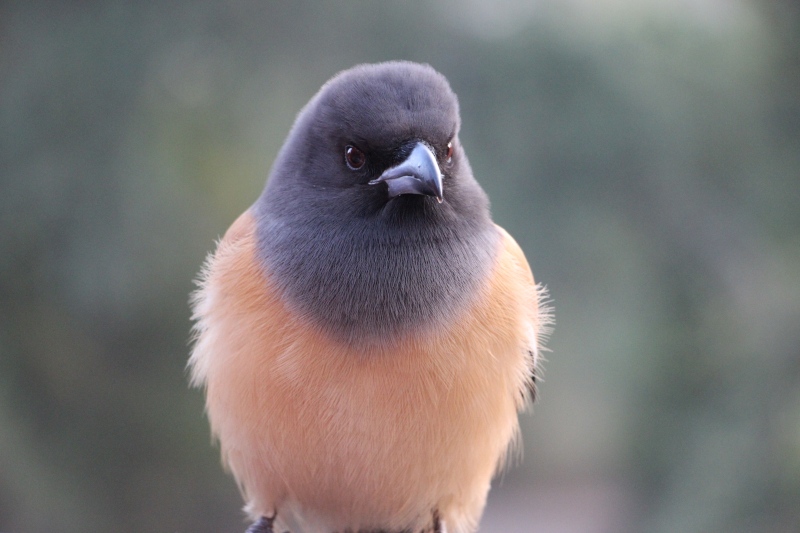
We had learned from our previous safaris in India that tiger spotting requires both skill and luck, and hours in a bumpy, dusty jeep staring into the bush:
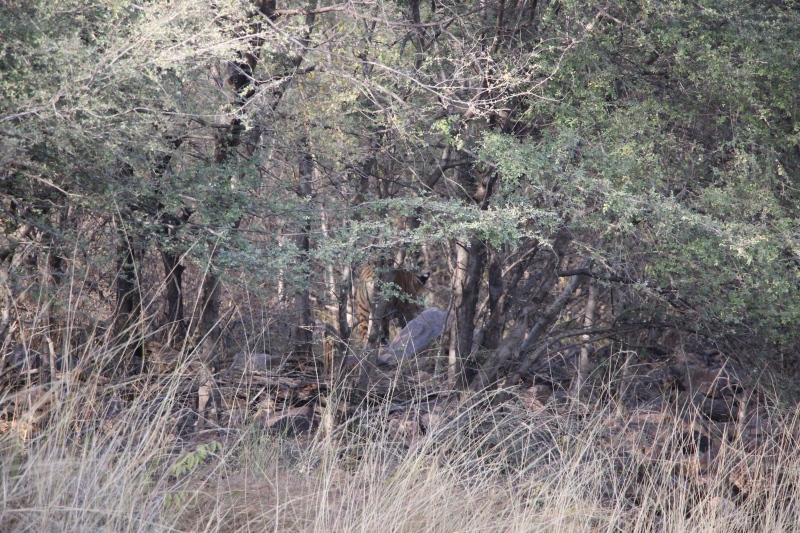
Did you know that tiger stripes are very effective camouflage? Did you notice the tiger in the last photo? It was a lot easier to notice him when he walked out and posed majestically on a stone pedestal.

It was even easier to notice the tigress lying 10 feet from the side of the road on our drive the next morning.
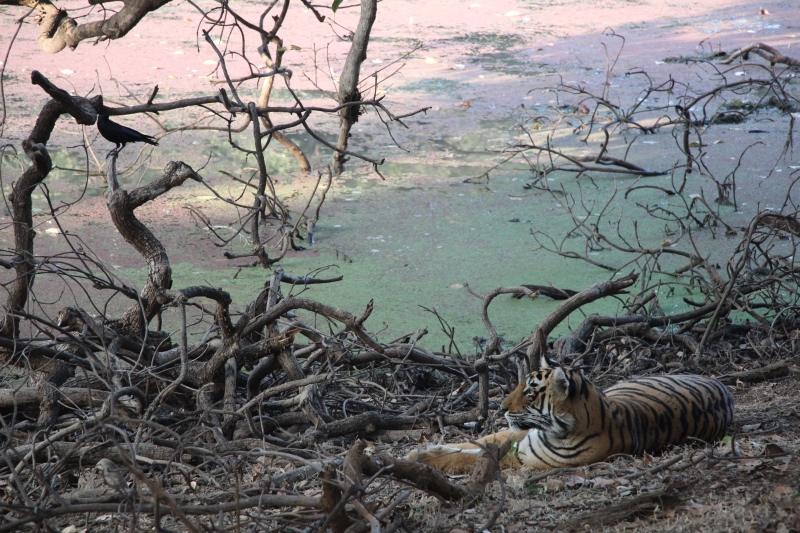
Although it took her a while to notice us.
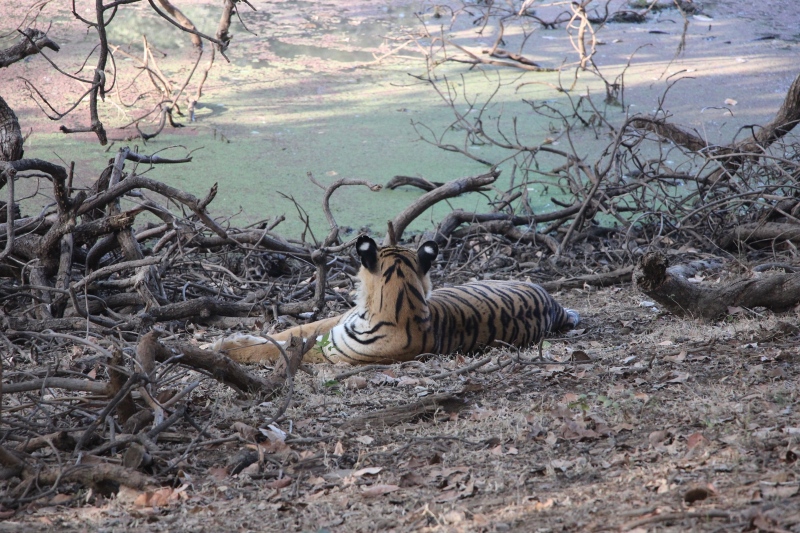
Eventually she rolled over and looked our way,


But she quickly became bored and yawned back to sleep,
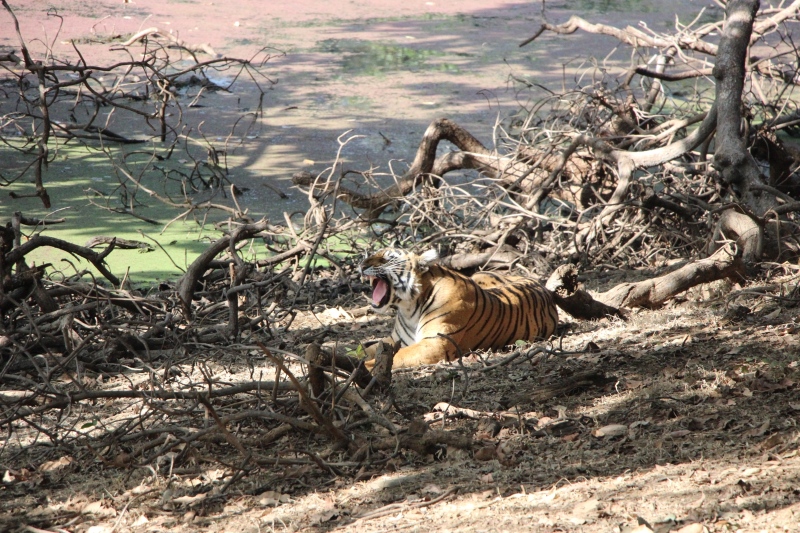
Only waking up when a bird flew by or she thought she heard someone open a can of tuna.

-Phil & Jessie